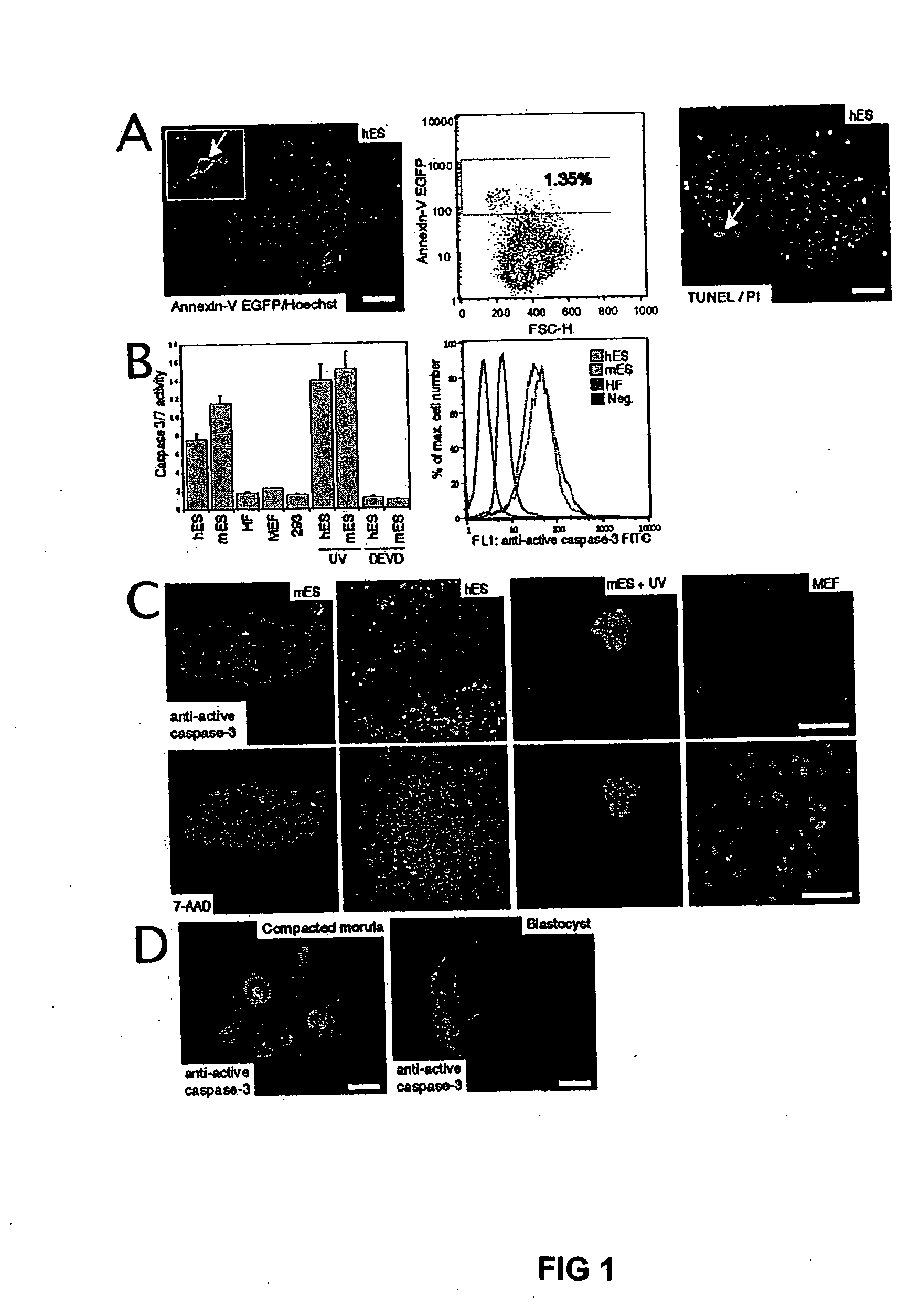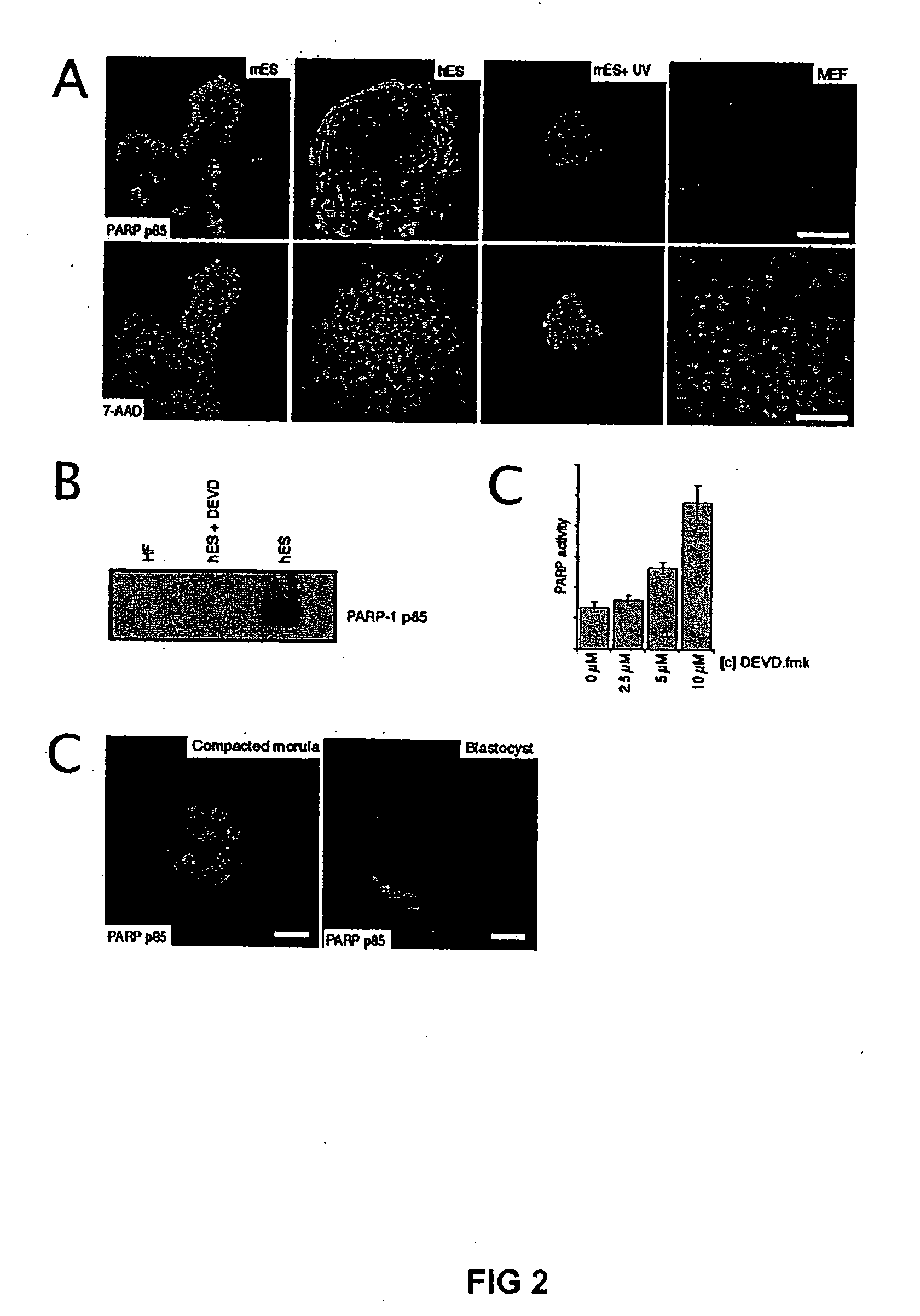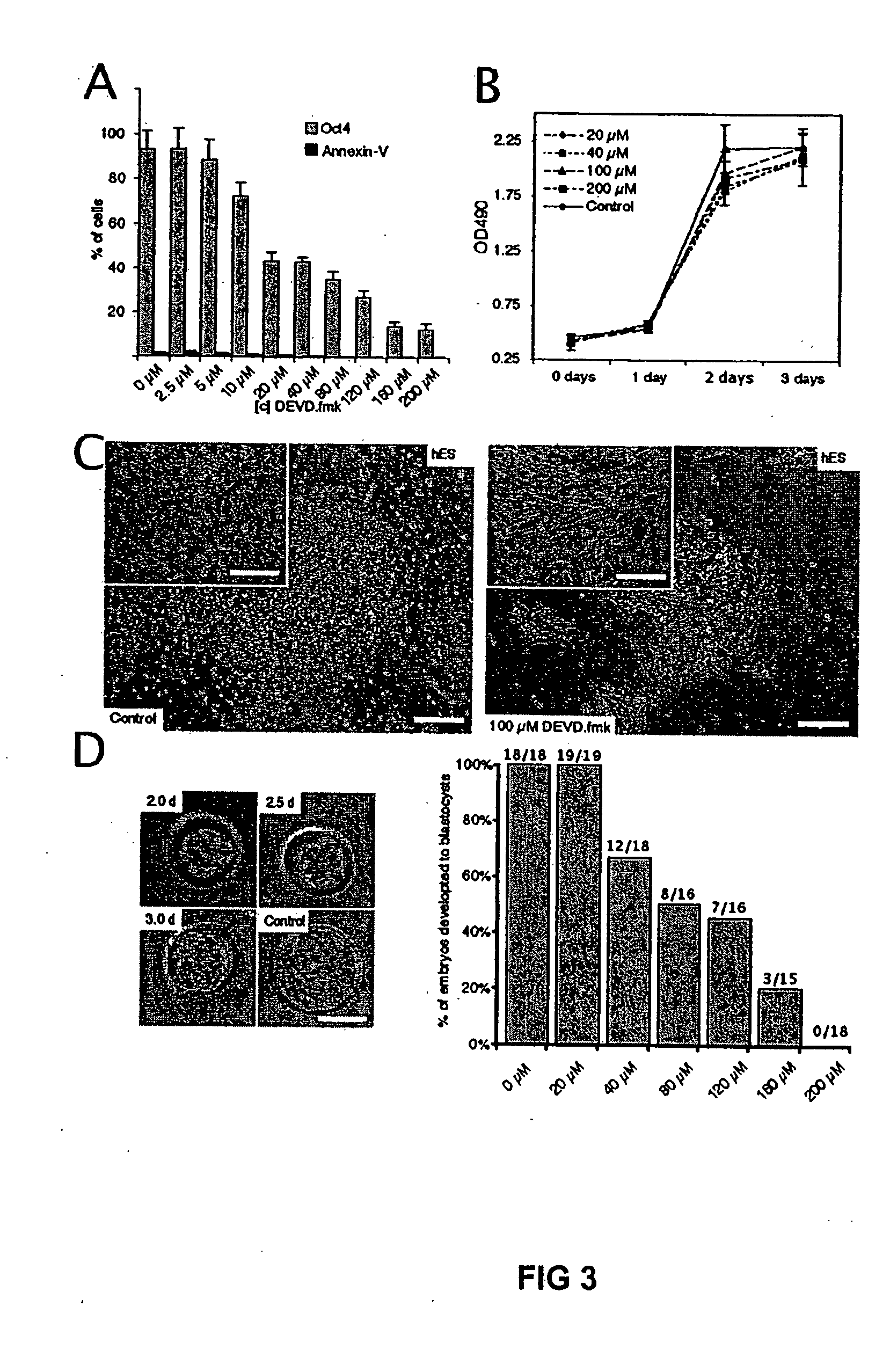Differentiation of pluripotent embryonic stem cells
- Summary
- Abstract
- Description
- Claims
- Application Information
AI Technical Summary
Benefits of technology
Problems solved by technology
Method used
Image
Examples
examples
Material and Methods
Cell Culture.
[0037] H1 human ES cells (WiCell) were cultured as previously described and incorporated by reference herein (Amit et al., 2000). Human ES cells were cultured under feeder-free conditions on culture flasks that were pre-coated with matrigel™ (Becton Dickinson Labware, Bedford, MA), using medium conditioned overnight on dense murine embryonic fibroblasts (MEFs) (Xu et al., 2001a). D3 mouse ES cells (ATCC) were cultured under feeder-free conditions in mouse ES cell medium, consisting of 85% Knock-Out DMEM supplemented with 15% Gibco KNOCKOUT Serum Replacement, 2.5 mM glutamine, 0.1 mM beta-mercaptoethanol (Sigma), and 1000 U / l LIF (Esgro) on gelatin-coated plates. Murine and human fibroblasts and the 293T cell lines were cultivated in DMEM +10% Fetal bovine serum (FBS) and 1% non essential amino acids.
[0038] Human ES cells were grown for the indicated time in 96-wells on Matrigel™ and a MTS test (CeIlTiter 96, Promega) wa...
PUM
 Login to View More
Login to View More Abstract
Description
Claims
Application Information
 Login to View More
Login to View More - R&D
- Intellectual Property
- Life Sciences
- Materials
- Tech Scout
- Unparalleled Data Quality
- Higher Quality Content
- 60% Fewer Hallucinations
Browse by: Latest US Patents, China's latest patents, Technical Efficacy Thesaurus, Application Domain, Technology Topic, Popular Technical Reports.
© 2025 PatSnap. All rights reserved.Legal|Privacy policy|Modern Slavery Act Transparency Statement|Sitemap|About US| Contact US: help@patsnap.com



